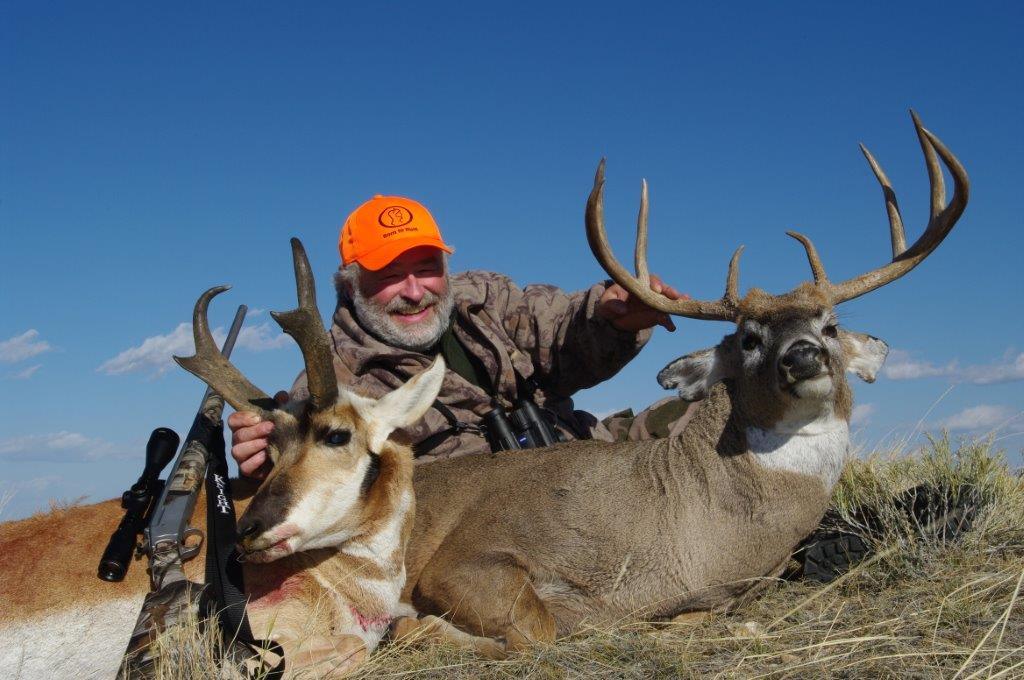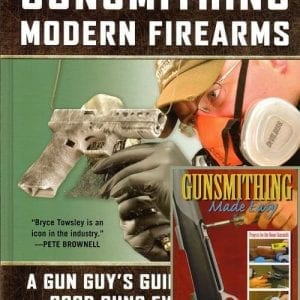 If you read my work than you know I am an advocate of using enough gun for any big game. It’s simple, I believe that you can control some things on a hunt and some things you cannot. I just don’t see the wisdom in using a marginal cartridge. That’s in your control, why risk the outcome of your hunt? The way I figure it, if you must err, err on the side of bigger. That gives you more options, brings insurance and helps increase the chances of a good outcome to the hunt. I don’t advocate for cannons, but for a reasonable approach in picking a cartridge that is in the upper 50% of the power level considered appropriate for the game being hunted.
If you read my work than you know I am an advocate of using enough gun for any big game. It’s simple, I believe that you can control some things on a hunt and some things you cannot. I just don’t see the wisdom in using a marginal cartridge. That’s in your control, why risk the outcome of your hunt? The way I figure it, if you must err, err on the side of bigger. That gives you more options, brings insurance and helps increase the chances of a good outcome to the hunt. I don’t advocate for cannons, but for a reasonable approach in picking a cartridge that is in the upper 50% of the power level considered appropriate for the game being hunted.
The level of venom for those advocating for the lower 50% is amazing and the smaller the cartridge the guy is promoting, the more vicious the attack. I even had one editor all but fire me years ago because I refused to include the .22-250 as one of the “Ultimate Elk Cartridges.” He was pretty much a moron who didn’t last long at that magazine or the hunting industry. He had shot one elk, a cow on a cull hunt, and that was the gun some cowboy gave him to use for the head shot. So of course, he thought it was the best of the best elk cartridge ever.
When I write about this for elk, moose or even deer hunting the magazine will be inundated with letters telling the editor that I am stupid and must be fired. If it’s an elk article, they will usually include a story about their cousin’s, sister’s, husband’s uncle who “shot a bunch of elk with a .243.” So of course that means it’s plenty of gun. Or they tell about the elk they shot twenty years ago with a .270, which I suppose is proof that a .270 is an elk gun.
They only read what they want to read and often manage to miss important parts of the article. I never tell anyone not to use a .270. Hell, if that’s what you want, go for it; I believe in freedom. But I do express my opinion that there are much better cartridges for elk than the .270. Somehow that causes the wolves to howl.
It got bad enough with one major hunting magazine that the editor at the time decided he had to write another article about elk guns in which he appeased those who believed a .243, .270, .25-06 or whatever the letter writer’s were promoting is the way to go.
If it’s a deer cartridge article, I’ll get a bunch of letters from .223 users, almost always bragging about their head shots. Either way, “shot placement” is always a big part of any argument for a little gun.
Really guys? What do you think I do, make it a point to shoot them in the ass because I have a big gun?
Of course shot placement is important. It’s important no matter what cartridge you use. But the thing is, if you have much experience with big game hunting, you know that shot placement is not always as easy as it sounds. Or the presented shot might be outside the limits of the little cartridge you are using. A bigger cartridge brings some options to the table that an “adequate” cartridge does not. That’s all I am saying.
Oddly enough, while I was working on this I got a message from a writer buddy planning an elk hunt. He was asking about one of the newer cartridges that is getting a bunch of BS hype right now. I suggested something else; particularly as he indicated he might need to take a long shot. He summed it up when he said: “Don’t get me wrong. I don’t want to take a 400 yard shot. But if it’s last day, last chance and no elk = no story? You know how it goes.”
The issue of recoil will always come up as well. “I think it’s smarter to bring a .270 you can shoot than a .300 you are scared of!” Yes, I agree. But, why are you scared of the .300? Because you don’t know how to shoot it, that’s why. Which means you never practice. Which means you are probably not all that good with the .270, either. Sure, you have shot a dozen deer with it over the years, but the longest shot was probably 60 yards. If you set up the rifle well and practice shooting, anybody without a medical issue can handle the cartridges I advocate for hunting deer or elk. Barnes Bullet’s Coni Brooks has hunted the world with a .338 Winchester. She is a petite woman and shoots that gun well, so come on guys, man up; learn to shoot.
I will note that almost without fail, if I am hunting with an experienced guide who knows and understands guns, they will agree with me on this issue.
Which brings me to the point of this rant. I recently hunted Alaskan brown bear with a guide and an outfitter who were both gun nuts. These are guys who know rifles, know ballistics and know bullets. They also see more brown bears get shot in a year than the rest of us will in a lifetime, maybe two lifetimes.
They are both advocates of larger cartridges. Chris Erickson is a lifetime Alaskan, born while Alaska was still a Territory of the United States. He is 58 years old and has been guiding in Alaska all of his adult life. First as a guide for his dad John Erickson, then as a partner, and then later as the sole owner of Tok River Outfitters. He has more experience with the interior grizzly and coastal brown bear that just about anybody alive, including shooting a few in self-defense. His gun on this hunt (one I covet,) is a 1951 vintage Sako in .375 H&H, updated with express sights, quick release scope mounts, a McMillan stock, and the late Walter Birdsong’s Black-T Teflon coating on the metal. Chris shoots handloaded ammo, mostly with a 300-grain Nosler Partition bullet. Chris has also used the .458 Winchester and many other cartridges. In fact, the .375 H&H is the smallest caliber he uses when backing up a client.
Lucas Clark, an exceptional hunter and woodsman, is head guide for Chris and about as hard core a gun guy as I know. His rifle was a custom built .416 Taylor (The .458 Winchester necked down) on a Montana action. He has finished the stock with truck bed liner and camo painted the metal. This rifle is short, handy and deadly. A perfect bear gun. He, of course, handloads and uses chiefly the Alaska Bullet Works 400-grain Kodiak Bonded Core bullet. Lucas has experience with a wide range of guns and cartridges, but for bear hunting he never even mentioned anything little.
Clearly, these experienced guides understand the importance of using enough gun for dangerous game. So it puzzles me why so many get mad when I suggest the same strategy for non-dangerous game.










